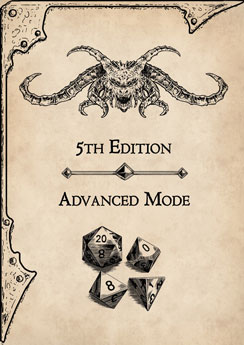Tiny beast (animal), unaligned
Armor Class 11
Hit Points 1 (1d4-1)
Speed 5 ft., fly 60 ft.
Proficiency Bonus +2
Proficiency Bonus +2 (5th Edition Advanced Mode)
| STR | DEX | CON | INT | WIS | CHA |
|---|---|---|---|---|---|
| 3 (-4) | 13 (+1) | 8 (-1) | 2 (-4) | 12 (+1) | 7 (-2) |
Skills Perception +3, Stealth +3
Senses Darkvision 120 ft., passive Perception 13
Challenge 0 (10 XP)
Flyby. The owl doesn’t provoke opportunity attacks when it flies out of an enemy’s reach.
Keen Hearing and Sight. The owl has advantage on Wisdom (Perception) checks that rely on hearing or sight.
Night Hunter (suggested). The owl has advantage on stealth check during nighttime, and a target has disadvantage on perception checks to spot the owl.
Swoop (suggested). If the owl fly from a distance of at least 50 feet, it gains advantage on each talon attack and inflict double damage.
ACTIONS
- Multiattack (suggested). The owl makes three attacks, one with its bite and two with its talons.
- Beak. Melee Weapons Attack: +3 to hit, reach 5 ft., one targer. Hit : 1 (1d1) piercing damage.
- Beak (suggested). Melee Weapons Attack: +3 to hit, reach 0 ft., one targer. Hit : 1 (1d1) piercing damage.
- Talons. Melee Weapon Attack: +3 to hit, reach 5 ft., one target. Hit: 1 (1d1) slashing damage.
- Talons (suggested). Melee Weapon Attack: +3 to hit, reach 0 ft., one target. Hit: 1 (1d2) slashing damage.
5th Edition Advanced Mode
Limiting the power of a character and making the overall difficulty of the game harder, does not reduce the creativity, indeed it does quite the opposite.
The Game Master has the option to use any and all of the instances proposed in this guide, or just some of them according to their preference.
It is the lack of something that move and motivate characters, not the abundance of it
DESCRIPTION
Owls are tiny beasts that resemble a cross between a bear and an owl. They have brown or white feathers covering their bodies, and a large, hooked beak that can deliver a painful bite. Their eyes are wide and can see in the dark, and their ears are keen and can hear the slightest sound. They have four legs, each ending in sharp claws that can slash at their prey. They have a short tail with long feathers, and a wingspan of up to 6 feet.
COMBAT
Owls are not very aggressive, but they will defend themselves if threatened. They use their flyby ability to swoop down on their enemies and attack with their talons, then fly away without provoking opportunity attacks. They also use their keen hearing and sight to spot their foes and avoid danger. They have advantage on perception checks that rely on hearing or sight. Owls are often used as familiars by spellcasters, who can benefit from their senses and mobility.
HABITAT / SOCIETY
Owls are nocturnal creatures that live in forests, especially in cold or temperate regions. They roost in secluded areas during the day, such as hollow trees or caves. They are solitary hunters, but they may form pairs or small flocks during the mating season. They communicate with each other using hoots, screeches, and clicks. Owls are sometimes revered or feared by other forest dwellers, who see them as omens or guides.
ECOLOGY
Owls are carnivorous, feeding on rodents, birds, insects, and other small animals. They hunt by flying silently and using their keen senses to locate their prey. They swallow their food whole, then regurgitate the indigestible parts as pellets. Owls have few natural predators, but they may be hunted by larger birds of prey, such as eagles or hawks. Owls play an important role in the forest ecosystem, as they control the population of rodents and other pests.
